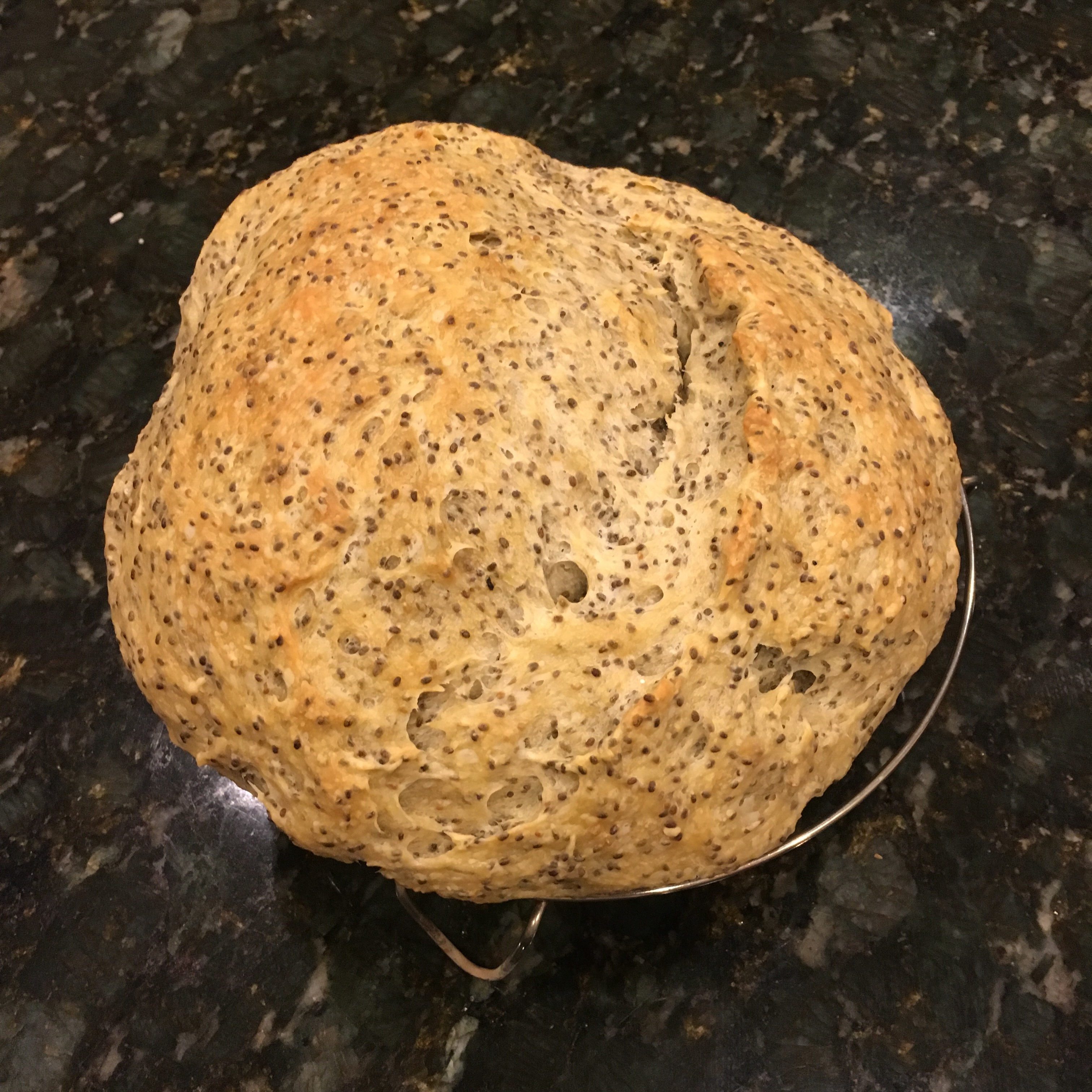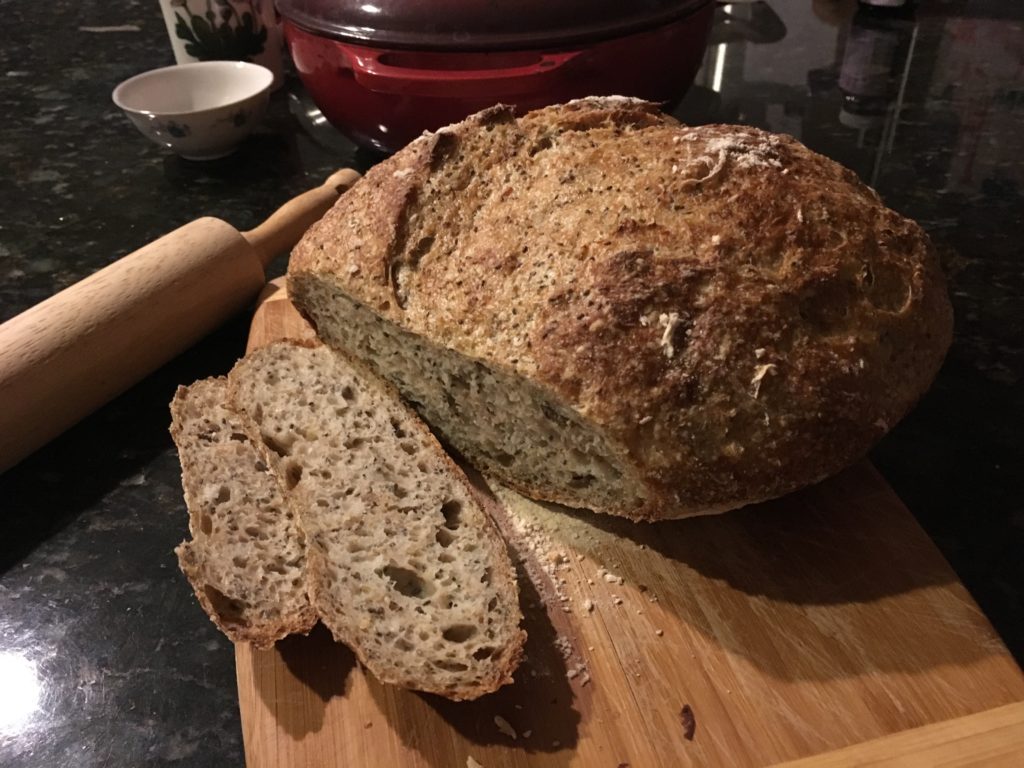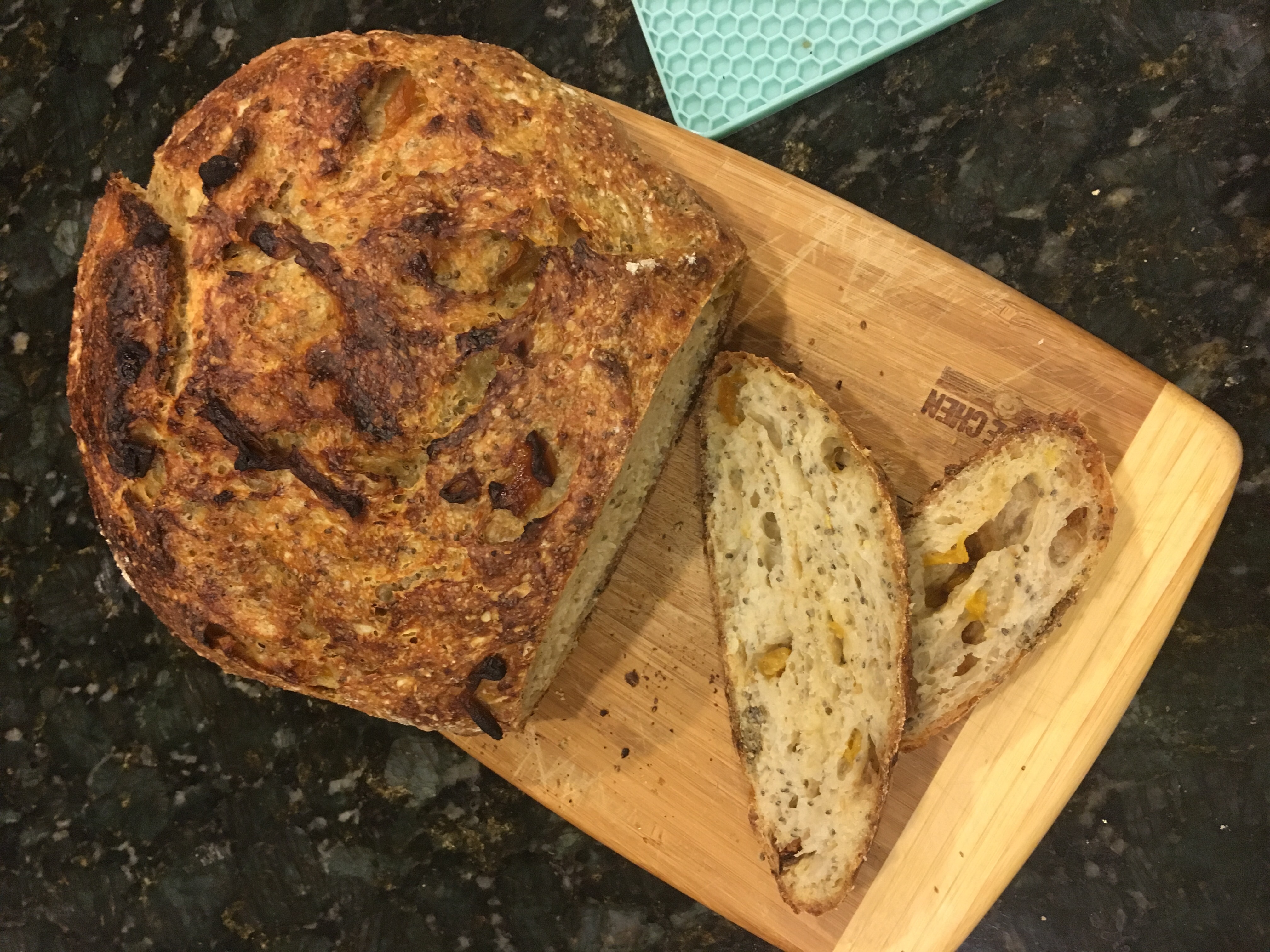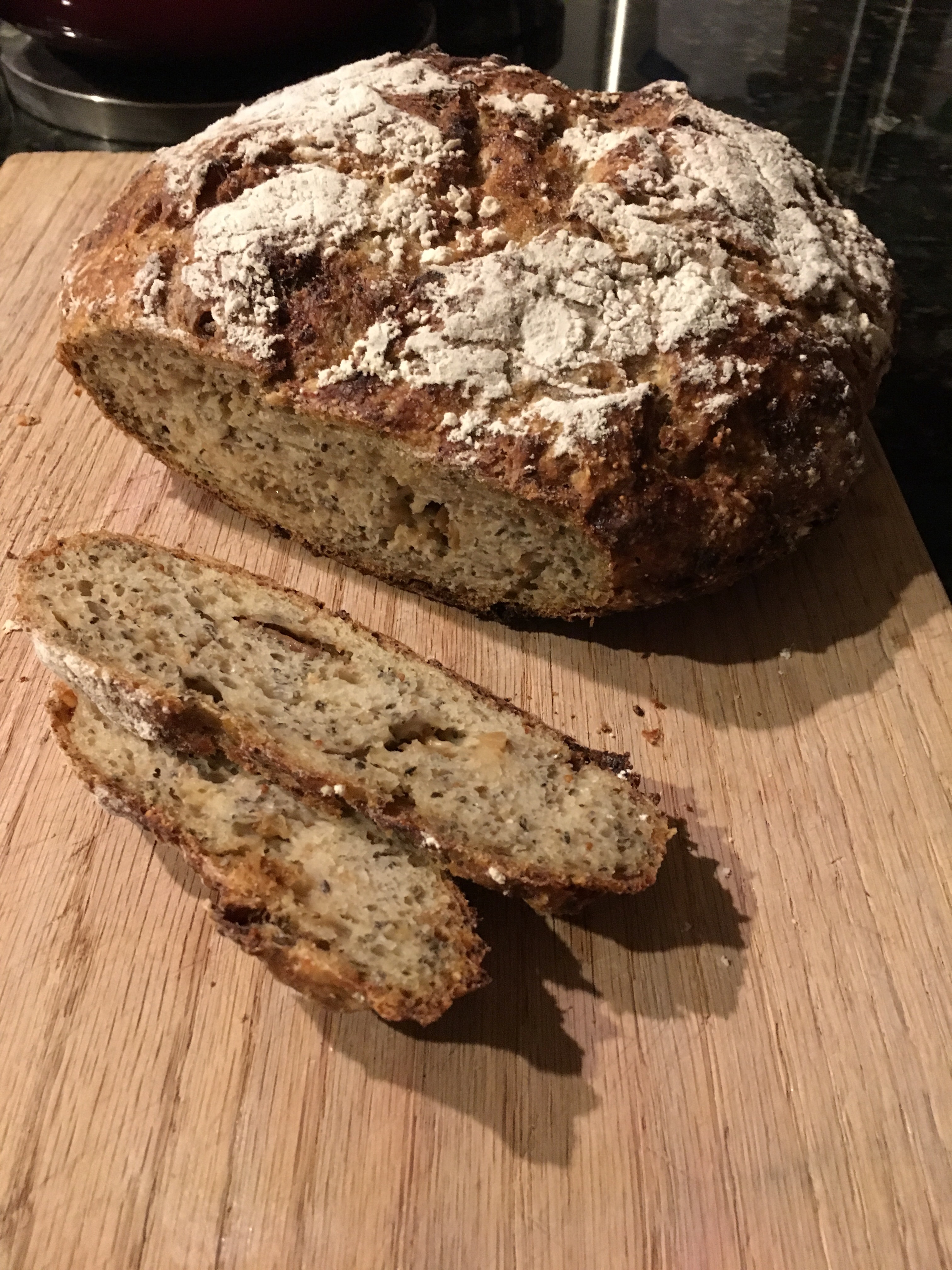We had some old cream that was set to expire, so we made some butter last Saturday. With the butter came buttermilk, which I had never tasted in its non-cultured form. I didn’t realize that non-cultured buttermilk would taste (like milk, duh!) but I was kind of disappointed.
However, leftover buttermilk would be perfect for one thing, making an enriched bread. We had a birthday party to attend that day, so we refrigerated the buttermilk for a mix on Sunday morning. So I took the usual 4-3-1-.1 recipe to make an enriched bread
400g flour
150g buttermilk + 150g milk
100g starter (the usual 50/50 mix)
10g salt
60g melted butter
60g chia seeds soaked in 90g water
We started with a twist I don’t plan on repeating. I decided to mix the dough in the kitchenaid. The machine seems to work just fine, but since I don’t normally handknead (it’s too wet a mix for hand kneading) this doesn’t save any effort and it alienates me from the dough and the tactile feedback that comes from hand mixing.
After that came the second twist. We found out there was a drum circle in the Summerlin library in the afternoon. Given that the few loaves have overproofed, I decided to play it safe and threw the dough into the fridge when we left for the event. This was definitely the correct decision, since we ended up meeting up with some friends and stayed out past dinner.
On Monday I took the dough out after work, warmed it up, but ultimately decided it wasn’t ready to bake. It was getting late and a bake would have really made it a late night. With my tendency to wake up early, anything past ten is a bit too late.
However, the dough wasn’t getting any younger and we had also finished our bounty from last week’s overproofing fiasco. So on Tuesday I brought it out after work, warmed it in the proofing oven until 8:20, after which I fired it up to 350f. The dough had not completely warmed up, so I folded the dough, an exercise I had recently stopped doing, and it held its shape nicely.
Aside from the long proof and the mixer, I tried two other deviations from my usual process. First, I did not preheat the lid. The process of handling a preheated dutch oven is fraught enough, I’d just as soon avoid having to work with a hot lid as well. Given how this one came out, I’m not sure this will be a permannt change, but I’m going to try again with a normal dough. The other twist came from my coworker who wets her ball of dough with her hands to get a chewier crust. Unfortunately this dough came out with an very thin crust, so while it fun to fondle the dough before throwing it into the dutch oven, I doubt I’ll try it again, certainly not with an enriched bread.
The process of transferring the dough to the dutch oven was uneventful, five snips to the top, throw on the lid, and back into the oven. As usual, I baked for the first half hour with the lid on, and the rise looked good when I took it off. The crust was still white after twenty minutes without the lid, so I ended up baking it for another forty minutes. After an hour and a half in the oven, I was getting worried about drying out the loaf so I pulled it out even though the crust was still very pale.
This morning, I just cut my first slice and the verdict is mixed. The crumb is just fine, the usual density I generally get as long as I avoid overproofing the loaf. However, the crust is paper thin; the color in the oven did not lie. I avoided going high on the oven to avoid burning the fats in the butter and milk, but I think I may have stayed too low, especially since I maybe could have gone higher because this bread did not include any sugar in the mix.
And finally, the bread is a bit sour. A couple weeks ago, I had pondered why my sourdoughs are never sour. I’ve read that the key is a cold proof, which doesn’t happen naturally in Vegas, so I rationally knew the answer. Now I’ve proved it to myself. However, my wife is not a fan of commercial sourdoughs, so I doubt it won’t go over well with her. But my daughter, who will drink the vinegar and soy sauce mix that we make for potstickers, might dig the flavor.
If we ever make butter again, I’ll definitely use the buttermilk in the dough, though I don’t plan on voluntarily repeating this extended proof unless circumstances force the issue again.




